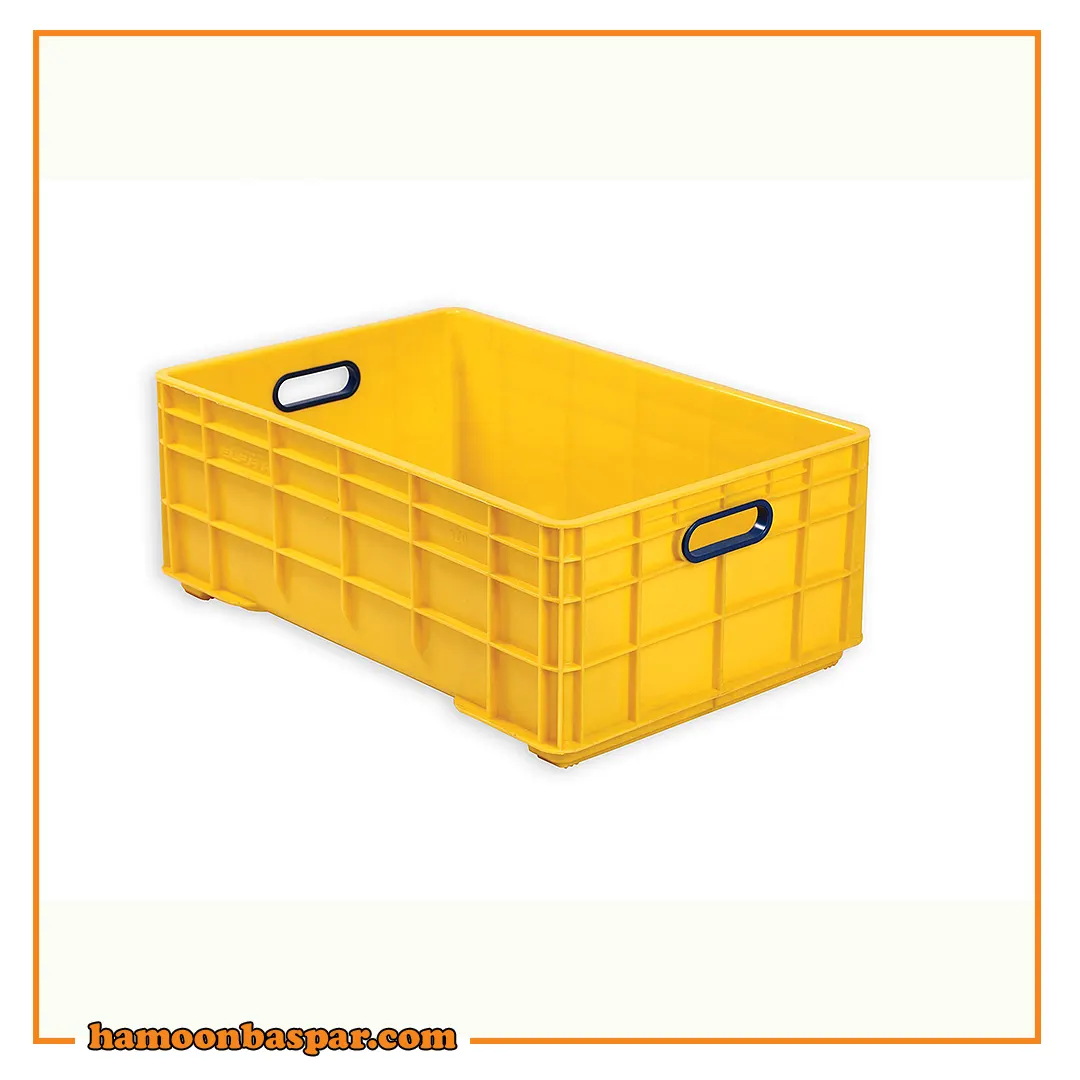To inquire about the price of Yellow Masterbatch, click.
Production of yellow masterbatch
As a versatile coloring agent, yellow masterbatch plays an important role in the production of various products in several industries. Yellow masterbatches, like other types of colored masterbatches, are highly regarded for their ability to produce bright and vibrant colors that can be used in a wide variety of applications.
Yellow masterbatch is actually a type of colored masterbatch that is widely used in the plastic industry. Yellow Masterbatch is used as a colorant for various polymers such as polystyrene, polyolefin and polyvinyl chloride.
Yellow masterbatch is used in the plastic industry because of its favorable characteristics. For example, yellow masterbatch creates a uniform and attractive color in plastic products and also adds heat and light resistance to products. Also, yellow masterbatch can be used as a mixing agent for different materials such as red, blue and green colors to make the color of the final product better and more attractive.
Because of its excellent properties, yellow masterbatch is used in the production of various plastic products such as household appliances, plastic baskets and boxes, decorations, toys, car parts, etc. Yellow masterbatch production costs depend on the amount of production and the quality of the raw material.
In this article, we will examine the types of yellow masterbatch compounds and their benefits, as well as their various uses in different industries.
An introduction to the yellow masterbatch
Yellow masterbatches are produced by combining a carrier resin with a highly concentrated pigment or dye. These compounds are usually added to raw materials during the manufacturing process to achieve the desired color in the final product. Yellow Masterbatch is available in various shades and colors from pale yellow to light and bright yellow.
What materials are used to produce yellow masterbatch?
For the production of yellow masterbatch, materials such as yellow pigments are used, such as pigments composed of iron oxide, sodium chromate, formaldehyde, cadmium, etc. Also, to improve the physical and chemical characteristics of the masterbatch, color stabilizers, surface preparation materials and environmental protection materials such as antioxidants and UV-stabilizers can be used.
In addition to raw materials, the production process of yellow masterbatch includes two main steps: production of plastic base material and addition of yellow pigment to it. In the first stage, the plastic base material such as polyolefin polymers, polystyrene, polyvinyl chloride, etc., is produced using various processes such as casting, injection, pressure such as extrusion process, etc.
In the next step, yellow pigment is added to the plastic base material. This work is done using a process called compositing or mixing in a completely homogeneous way and at different temperatures. In this process, the yellow pigment is mixed homogeneously with the plastic base material and then it is produced in the form of small seeds or granules of the same size and shape. These granules are then used as yellow masterbatch in various industries such as the production of pipes, strips, plates and plastic parts.
In general, the production of yellow masterbatch using plastic base materials and yellow pigments improves the color and physical characteristics of plastic products, and as a result, it helps to improve the quality and strength of products, as well as attract more customers and the sales market for plastic manufacturers.
Types of yellow masterbatch
Yellow masterbatch compounds can be divided into two main categories: organic and inorganic. Organic yellow masterbatches are made from natural or synthetic materials, while inorganic yellow masterbatches are made from minerals or metals.
Organic Yellow Masterbatch is commonly used in applications where a bright, vibrant color is desired, such as in the packaging industry. On the other hand, inorganic yellow masterbatch is used in applications where a lighter or earthier color is desired, such as in the construction industry.
Can you use materials other than yellow pigments to produce yellow masterbatch?
Yes, materials other than yellow pigments can be used to produce yellow masterbatch. For example, red and green pigments can be used in combination with yellow pigments to obtain a yellow color. But it should be noted that the use of non-yellow pigments may reduce the color quality and physical characteristics of the masterbatch.
Also, it should be noted that the use of pigments that contain heavy metals such as cadmium is not recommended due to negative environmental effects. In addition, it is not recommended to use pigments that become unreactive when exposed to light and change the color of the final product. Therefore, in the production of yellow masterbatch, it is better to use quality yellow pigments without pollutants in order to achieve the best results.
Advantages of using Yellow Masterbatch
One of the main advantages of using yellow masterbatches is their ability to provide a consistent and uniform color throughout the finished product. This is especially important in industries such as the packaging and textile industries where color consistency is critical for branding and marketing purposes.
Yellow Masterbatch is also highly concentrated, which means that only a small amount is needed to achieve the desired color. This can lead to significant cost savings for manufacturers, as they can use less pigment overall.
Application of yellow masterbatch in the packaging industry
Yellow masterbatch, like white masterbatch, is commonly used in the packaging industry to create bright and eye-catching packaging for a wide range of products. From food packaging to cosmetics and personal care products, yellow masterbatch can be used to create a variety of shades and colors.
In addition to aesthetic appeal, yellow masterbatch can also be used to create packaging that is resistant to ultraviolet rays and other environmental factors. This can help protect the contents of the package and extend their shelf life.
The use of yellow masterbatch in the automotive industry
Yellow masterbatch is also used in the automotive industry to create various types of components, including interior and exterior decorative parts, seats, and dashboard components. These compounds can be used to create a wide range of different shades and colors, from bright yellow to muted colors.
In addition to the aesthetic appeal, yellow masterbatch can be used to create very durable components that are resistant to wear and tear. This can help extend the life of the vehicle and improve its overall performance.
Note that another widely used masterbatch in the automotive industry is the black masterbatch.
The use of yellow masterbatch in the construction industry
Yellow masterbatch is often used in the construction industry to create a variety of products including roof tiles, pipes and insulation materials. These compounds can be used to create different shades and colors, from pale yellow to more earthy colors.
In addition to aesthetic appeal, yellow masterbatch can also be used to create very durable building materials that are resistant to environmental factors such as UV light and moisture. This can help extend the life of the building and improve its overall performance.
The use of yellow masterbatch in the textile industry
Yellow Masterbatch is usually used in the textile industry to dye a variety of fabrics and materials, including cotton, polyester, and nylon. These compounds can be used to create a wide range of different shades and colors, from pale yellow to bright yellow.
Application of yellow masterbatch in food industry
Yellow Masterbatch is commonly used in the food industry to color a variety of food products including candy, baked goods, and dairy products. These compounds can be used to create a wide range of different shades and colors, from pale yellow to bright yellow.
The yellow masterbatch used in the food industry, in addition to its aesthetic appeal, must also be safe for human consumption. This means they must meet strict regulatory guidelines and be free of harmful contaminants. In this case, we can also mention the use of additional masterbatch.
Future developments in Yellow Masterbatch
As technology continues to evolve, we can expect to see new and innovative uses of Yellow Masterbatch in a variety of different industries. For example, advances in nanotechnology may allow the creation of more vibrant and durable yellow masterbatches, while advances in biotechnology may allow the development of more sustainable and environmentally friendly compounds.
Conclusion
Masterbatch Yellow is a versatile and highly effective coloring agent that can be used in a wide range of applications in several different industries. Whether you’re looking to create eye-catching packaging, durable automotive parts or vibrant textiles, Yellow Masterbatch compounds can help you achieve the desired color and performance. As technology continues to evolve, we can expect to see more exciting developments in the world of Yellow Masterbatch and its applications.










No views